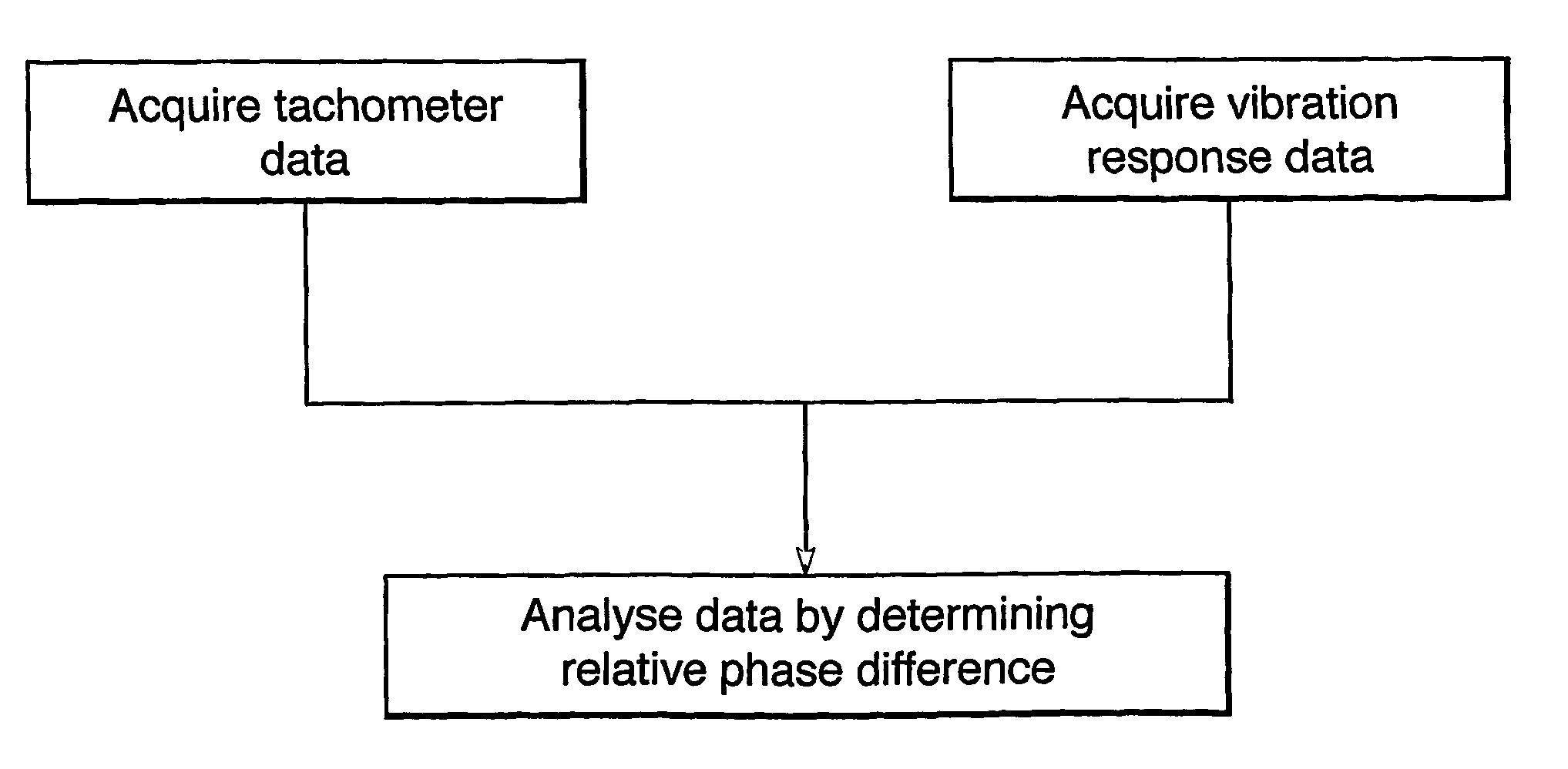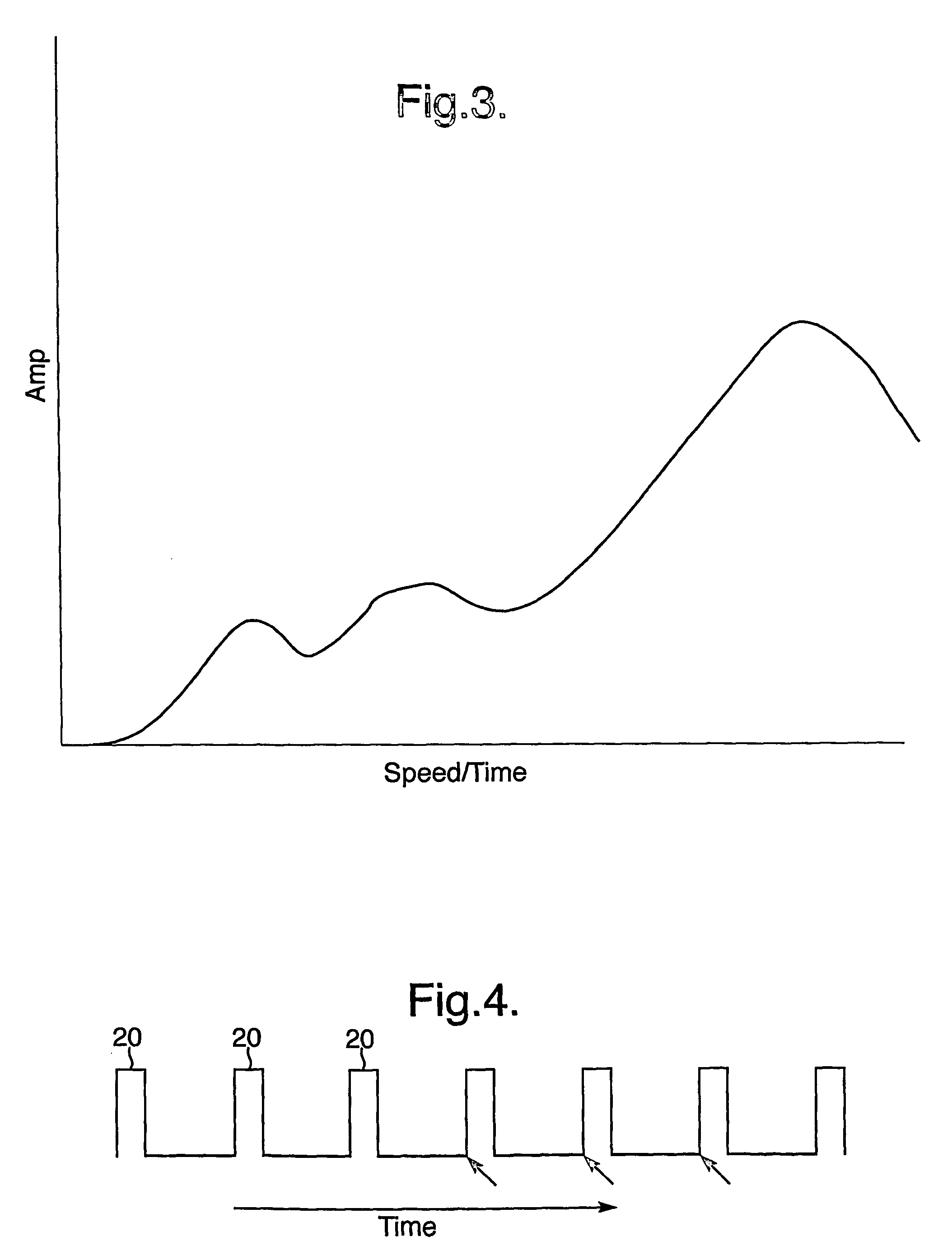Method and system for analysing tachometer and vibration data from an apparatus having one or more rotary components
a technology of rotary components and vibration data, which is applied in the direction of vibration measurement in solids, testing/calibration of speed/acceleration/shock measurement devices, and amplifier modifications to reduce noise influence. the relative phase difference between a vibration response and the corresponding engine order may change, and the phase difference may chang
- Summary
- Abstract
- Description
- Claims
- Application Information
AI Technical Summary
Benefits of technology
Problems solved by technology
Method used
Image
Examples
Embodiment Construction
[0070]FIG. 2 shows a schematic longitudinal section of the three coaxial shafts of a Rolls-Royce multi-shaft gas turbine engine. Low pressure (LP) shaft 1 occupies the central position and is surrounded in turn by intermediate pressure (IP) shaft 2 and high pressure (HP) shaft 3.
[0071]LP shaft 1 carries a single pole tachometer 4 which is conventionally used for shaft balancing operations. IP shaft 2 carries a 60 pole tachometer 5 which is conventionally used for standard shaft speed measurements for engine control purposes. HP shaft 3 is connected via bevel gear 6 and step aside gearbox 7 to main (external) gear box 8, with a tachometer 9 connected to the output of the main gear box.
[0072]Tachometer 4 produces a signal pulse for each rotation of the LP shaft, and hence the rotational frequency (i.e. shaft speed) of the LP shaft can be determined from the inverse of the period between signal pulses. Tachometer 5 produces 60 signal pulses for each rotation of the IP shaft, and hence ...
PUM
 Login to View More
Login to View More Abstract
Description
Claims
Application Information
 Login to View More
Login to View More - R&D
- Intellectual Property
- Life Sciences
- Materials
- Tech Scout
- Unparalleled Data Quality
- Higher Quality Content
- 60% Fewer Hallucinations
Browse by: Latest US Patents, China's latest patents, Technical Efficacy Thesaurus, Application Domain, Technology Topic, Popular Technical Reports.
© 2025 PatSnap. All rights reserved.Legal|Privacy policy|Modern Slavery Act Transparency Statement|Sitemap|About US| Contact US: help@patsnap.com



